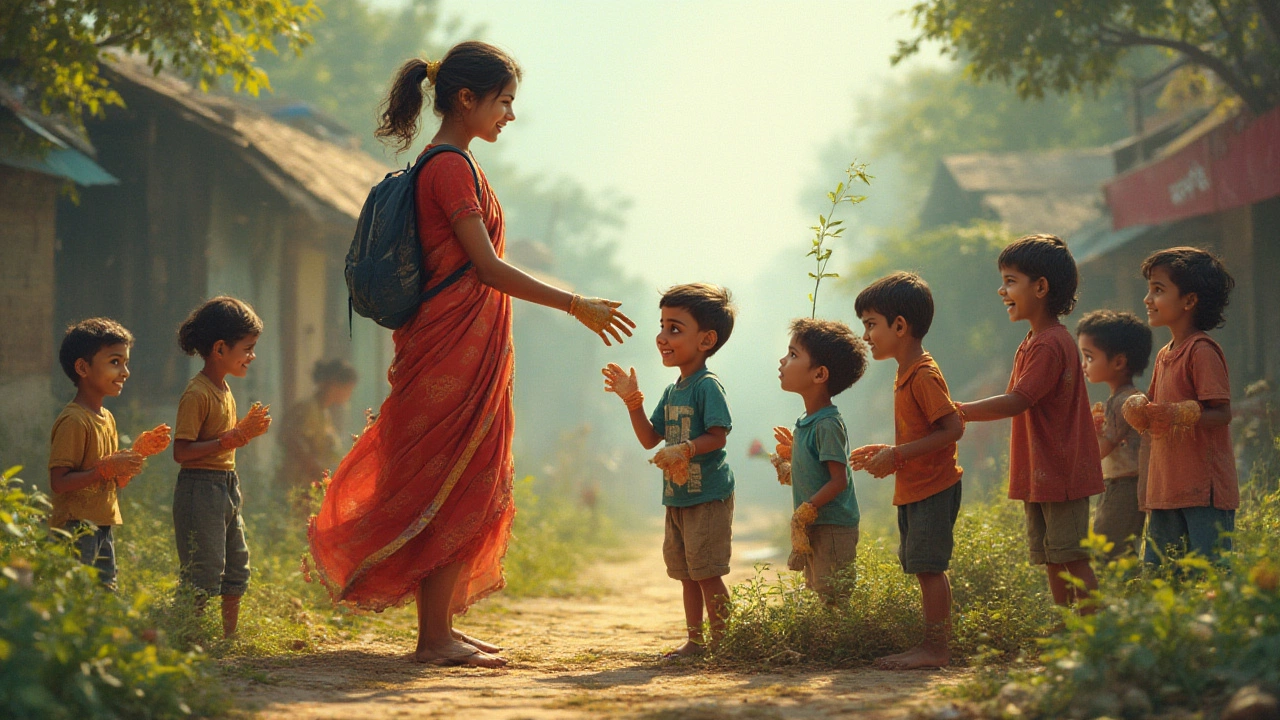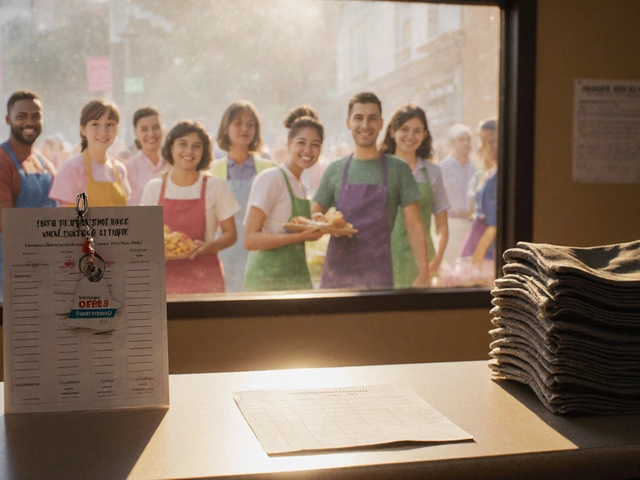If you’ve tried signing up for a local food pantry shift or joined a community cleanup in 2025, you might’ve noticed the same faces showing up—or sometimes way too few faces. Volunteerism, once a backbone of social support, is slipping. The numbers aren’t subtle: The U.S. Census showed a 23% drop in regular volunteers between 2019 and 2023. Australia’s giving rate is at a 25-year low. The UK saw volunteer participation barely bounce back after the pandemic, with some regions reporting under 10% of adults giving their time. It’s not just a blip. Charities, youth programs, and even major nonprofits are feeling the pinch. Why is the spirit of helping out taking a back seat?
Modern Life: Busy, Tired, and Pulled in a Thousand Directions
Let’s face it: life in 2025 is overwhelming. We’re told we have more time-saving tools than ever—apps for shopping, banking, even laundry pickup. Yet, somehow, free time feels squeezed. Work weeks stretch longer, remote jobs often blur the line between work and home, and side hustles gobble up spare hours. Add in childcare, commutes, and social media distractions, and suddenly, those few “open” hours? They’re spent crashing on the couch. A recent Pew Research Center survey found that over 60% of adults said "not enough time" was the main reason for skipping volunteer opportunities. Compare that to just 38% a decade ago. In the past, Sundays were for neighbors and church potlucks. Now, weekends blur into meal preps, soccer runs, or, for many, a second job.
The shift to more isolated, tech-based leisure doesn’t help. Zoom calls and TikTok scrolls fill social gaps. People report feeling connected online, but not invested locally. Even those who mean well often let “I’ll volunteer soon” drift into next month or never. And if you’ve ever applied for a highly-structured, background-checked volunteer shift, you know the paperwork alone can kill motivation.
Generational Shifts: Attitude Adjustments and Changing Motivations
If you ask Baby Boomers, many grew up with volunteering woven into school or church life. But Gen Z and Millennials? Their relationship with giving time is more complicated. Old-school, ad-hoc volunteering—showing up to mow the neighbor’s lawn or coach Little League—has been squeezed out in favor of short bursts or "micro-volunteering." Gen Zers especially want to see direct impact, and they're more likely to support causes by signing petitions, donating online, or sharing posts than clocking hours onsite. According to the DoSomething Strategic 2024 report, only 13% of Gen Zers volunteered in-person in the past year, yet over 70% said they “supported causes.”
It’s not just about preference, though. Schools once required community service—as recent as 2019, 41 states in the US had mandates. Now, many have relaxed standards or dropped the requirement, citing student mental health or logistical headaches. For college-bound students, the pandemic’s legacy of canceled programs means there’s less of an expectation to get out and help. And if it’s not “required,” it’s often skipped for more immediate priorities like tutoring or internships.

Burnout and Barriers: Why Good Intentions Aren’t Enough
Even the most dedicated volunteers are waving the white flag. Burnout is a huge culprit. After the pandemic, frontline help was in high demand, but volunteers quickly got overwhelmed. Food banks and shelters ran non-stop from 2020 through 2022. Some long-timers admit to feeling “used up.” One survey by Volunteer Canada last year found nearly half of experienced volunteers stepped back due to exhaustion or feeling unappreciated.
Then there’s the mountain of red tape. Post-pandemic, organizations face stricter regulations—health checks, background checks, and even orientation courses stretched over weeks. It’s enough to scare anyone off, especially new volunteers. Groups serving kids or vulnerable adults lean hard on safety. This means more forms, fewer walk-ins, and a lot of hoops. For young people or those who aren’t “regulars,” it can feel like joining an exclusive club instead of a welcoming team.
Accessibility is another wall. Many volunteer roles demand you get yourself there—sometimes miles out of town—buy your own supplies, or take unpaid leave from work. Those with disabilities, chronic illness, or irregular schedules find their options shrinking. And if you face language or cultural barriers, group volunteering can feel unwelcoming. It’s not lost on anyone: A 2023 UN Volunteers report warned that over 60% of unpaid community workers are still women, often people of color, handling massive workloads without fair support or recognition.
The Ripple Effects: Who Suffers When Volunteers Disappear?
The fallout is everywhere. When volunteer numbers drop, nonprofits and local programs scramble to fill gaps. Food banks run with smaller teams, cutting back deliveries or services. Hospitals miss the smiling faces who guide visitors. Youth programs have to cap enrollments or cancel projects. Events like community fairs or charity sports days scale down or fold entirely. The people who rely on these services—families in crisis, isolated seniors, kids needing mentoring—feel the hit first. There’s evidence of a chain reaction: As supports fade, social isolation and family stress climb.
It doesn’t just hurt people in crisis. Businesses lose too. Volunteering networks feed local economies and build the kind of neighborhood spirit that attracts residents, customers, and even investors. A Harvard Business Review article from 2023 noted, “Communities with strong volunteer bases see measurable drops in crime, higher school graduation rates, and greater business retention.” When that glue melts, everyone loses out.
Plus, volunteers themselves miss out on benefits you can’t buy—new friends, job skills, even better mental health. Studies show volunteering is linked to lower depression rates and longer lifespans. It works both ways: You give time, you gain a sense of purpose. When the system slips, so do these invisible supports.

Fresh Approaches: Rekindling the Volunteer Spirit
This decline isn’t set in stone. Solutions are already working in pockets worldwide. For starters, “micro-volunteering” is on the rise—think single-use projects that only take an hour or two. Some organizations now offer flexible, remote-friendly roles, making it possible to translate a brochure, host a virtual workshop, or call seniors from your sofa. Others run “volunteer fairs” online, letting people browse roles like you’d shop for jeans.
Some cool incentives are emerging, too. In South Korea, the government tracks youth volunteer hours and gives points toward university admissions or job placements. Toronto libraries recently started letting teens pay down library fines with volunteer shifts. Even companies are joining the push; Salesforce lets staff take up to 7 paid days a year for volunteering.
Organizations are also stepping up to slash the entry barriers: streamlining background checks, offering travel stipends, making shifts shorter, or building better support for people with disabilities. There’s also a push to recognize invisible labor—like caregiving at home or running neighborhood WhatsApp groups—as real community service.
The biggest trick? Make it personal and social. People stick with volunteering when it plugs them into their interests—gardening, digital skills, or fitness—and their friendships. You might not sign up for six months of soup kitchen work, but you’ll show up if your book club is cooking together. Tying volunteering to “passions” instead of guilt works better these days.
As Bill Gates put it back in 2023,
"Volunteering isn’t just about giving back. It’s about building a world you want to live in, one hour at a time."No app can manufacture that, but a little creativity from organizations—and a nudge from friends—just might bring the volunteer spirit back off the endangered list.





